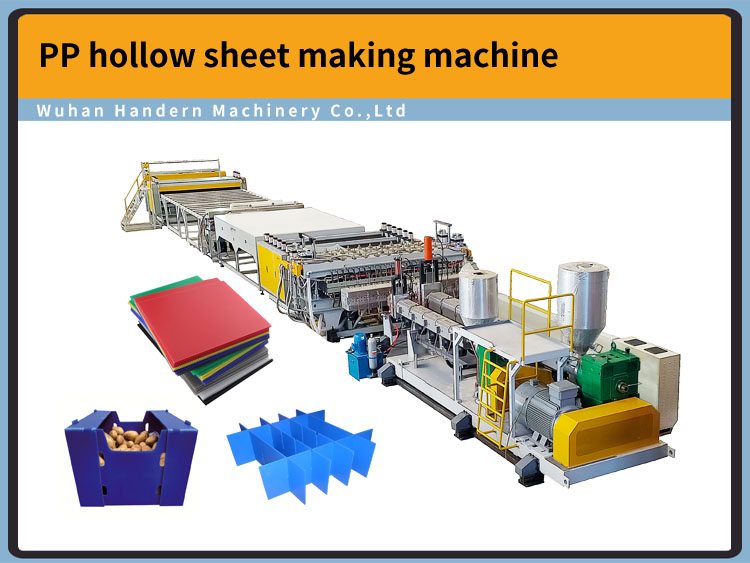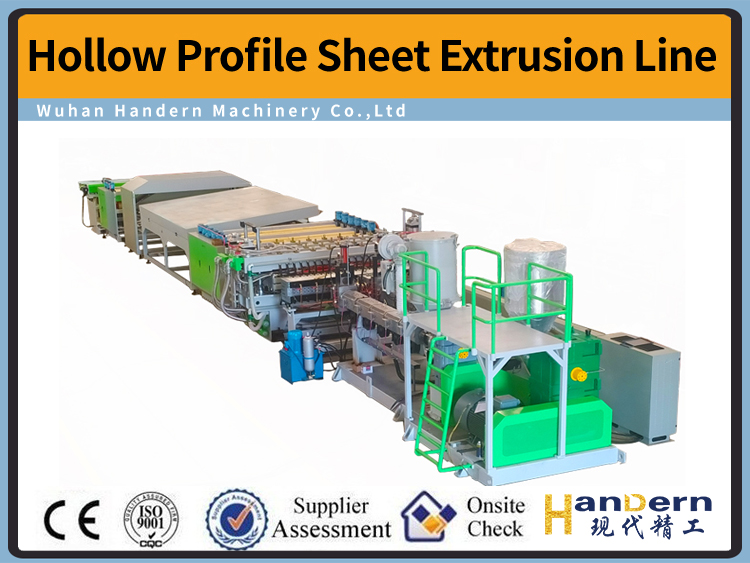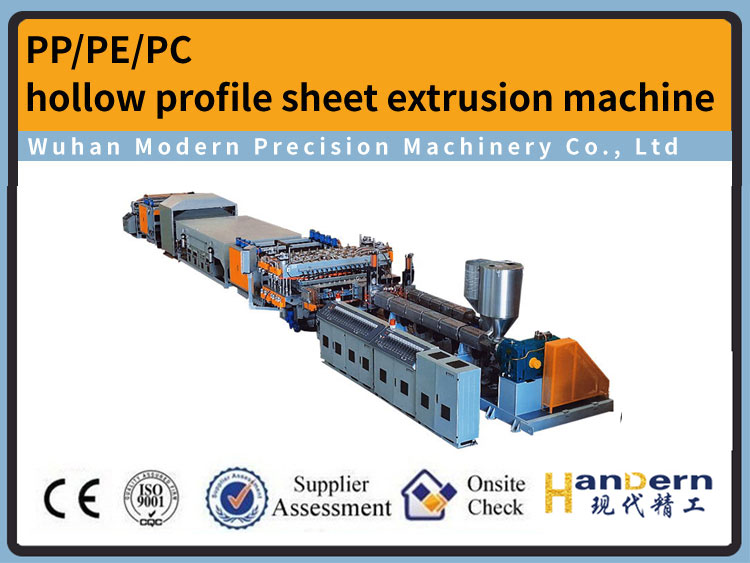Modification principle of engineering plastics plastic plate production line
DATE:2021/3/2 9:18:12 / READ: / SOURCE:This station
At present, China's plastic industry is developing rapidly, and the application scope of plastics is more and more extensive. However, with the rapid development of China's modernization, various new requirements are put forward for plastic products. In order to meet the needs of different uses, in addition to actively developing new synthetic resin varieties, the existing resin should be modified by chemical or physical methods to achieve the desired purpose, which is plastic modification. Generally speaking, the plastic modification technology is much easier than the synthesis of a new resin, especially the physical modification, which can be carried out in the general plastic molding and processing plants, and is easy to take effect, so the plastic modification work has been paid great attention.
Plastic sheet production line www.handern.com
The modification of human plastics can be divided into physical modification and chemical modification. Physical modification includes filling modification, reinforcing modification, blending modification, etc.; chemical modification includes copolymerization modification, interpenetrating polymer network, plasma modification, surface chemical modification, etc. It can also be divided into foaming modification, crosslinking modification, tensile modification, composite modification, blending modification and so on. Filling modification refers to adding inorganic or organic fillers in the plastic molding process, which can not only greatly reduce the price of plastic products, promote the popularization and application of plastic products, but also significantly improve the mechanical properties, friction resistance, thermal properties and aging resistance of plastics. For example, it can overcome the shortcomings of plastics, such as low strength, high temperature resistance, low rigidity, easy to damage, easy to creep and so on. Blending modification refers to mixing one or more kinds of plastics or elastomers in one plastic matrix by various mixing methods (such as open mixer, extruder, etc.), so as to change the properties of plastics, sometimes also known as plastic alloy. Chemical modification mainly includes graft copolymerization and block copolymerization. Graft copolymerization is that the parent resin is dissolved in the plastic monomer to be grafted, and then the monomer to be grafted is polymerized. At this time, the resin formed is grafted onto the parent resin. Block copolymerization refers to the formation of a new linear molecule at the end of each monomer unit in a certain order of length. Plastic sheet production line www.handern.com
According to the types of monomer units, block copolymers can be divided into diblock, triblock and multiblock copolymers. The so-called reinforced plastics is the combination of polymer resin and reinforced materials, so as to greatly improve the mechanical strength of materials. Some general plastics can also be used as engineering plastics after reinforcement. For some engineering plastics, their properties have stepped into the category of metal strength through reinforcement, thus greatly expanding the depth and breadth of the application of thermoplastics as structural materials in the field of engineering. Plastic sheet production line www.handern.com
Although some properties of plastic materials and products are improved, some of the original properties of plastics will be lost. For example, adding some fillers will reduce the insulation performance and corrosion resistance of plastics, and lose some luster of plastics. These problems can be overcome by choosing appropriate formula and taking corresponding measures according to different uses of products.
Author:admin




